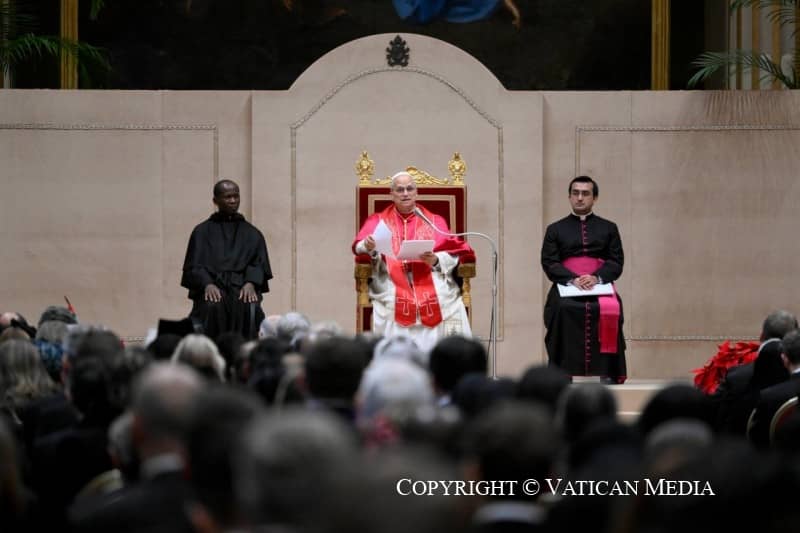ROME – Crux readers who are also in the habit of watching my weekly video, “Last Week in the Church,” or catching it as a podcast, will have noticed that a promised episode a week ago never materialized.
The reason is depressingly simple: In the large building in Rome’s Prati neighborhood in which my wife and I live, we lost power on Monday and didn’t really get it back until Wednesday, rendering recording the video in time for release last week impossible.
To be honest, as much as I love doing “Last Week in the Church,” that wasn’t the biggest inconvenience.
Aside from the fact that Elise and I couldn’t sleep due to the sweltering heat, and that our two pugs set new world records in panting and slurping up water, our real concern was for the numerous elderly persons who reside in our palazzo and who depend upon electricity to stay healthy and cool.
This might pass as simply grousing about a personal frustration, except for the following three facts.
First, it’s hardly just us.
Rome has experienced chronic summer blackouts for the last three years, in part due to record high temperatures that have crested across southern Europe. This July and August alone, by my count, at least 18 different Roman neighborhoods have suffered blackouts ranging from several hours to several days, and that’s not at all a complete list. The primary cause is accelerated demand for air conditioning, which has out a greater strain on the city’s electrical grid than it can bear.
Emblematic have been a days-long blackout in the city’s Pigneto area, where shop owners were compelled to sleep in their stores for days on end because without power they were unable to close the shutters to lock up, and in the ritzy Via Veneto section of the city, where restaurant owners this week were forced to cancel scores of reservations and toss out some of the city’s most expensive foodstuffs due to a lack of power for refrigeration.
Second, this is a systematic problem with no signs of being quickly resolved.
A statement released in July by Areti, the city’s major energy distributor, indicated that Rome has a maximum potency citywide of 2,000 megawatts. Based on surveys by energy-industry firms, most urban areas with a population of around 3 million, which is Rome’s situation, have grids capable of delivering closer to 3,000 megawatts.
While Roman officials have promised improvements, including an accelerated transition to green sources such as solar and wind energy, there’s little indication those solutions are likely to come on line anytime soon.
Third, all this has significant implications for next year’s Jubilee, when an additional 35 million visitors are expected to wash through the city.
Many will be coming during the summer vacation period, and most will expect the air condition to work in their hotels and Airbnbs, the kitchens to be working in the restaurants where the plan to eat, and the outlets to function where they want to charge their mobile phones and other devices.
If the past is prologue, those are expectations that may or may not actually be fulfilled.
Granted, of course, pilgrimage and tourism aren’t the same thing. Historically, part of the appeal of the pilgrim experience was precisely its hardships – the long walks, the steep climbs, the swings in climate and temperature, the dangers and uncertainties, and other privations along the way. All have been seen by pious souls as opportunities to purge the soul and to participate in the sufferings of Christ and the martyrs.
If that’s your perspective, then perhaps the prospect of a few days roughing it in Rome doesn’t seem daunting.
On the other hand, it’s probably not fair to force elderly pilgrims, or families with young children, or people with health conditions, or those in any number of other situations, to endure sacrifices they never chose to make, and which, in all honesty, they’re probably paying top dollar to avoid.
So, what’s the best advice under the current circumstances?
Fundamentally, it’s this: If you’re drawn to making the trek to Rome to participate in the jubilee, the official motto of which is “Pilgrims in Hope,” by all means come. I vividly recall the last ordinary jubilee under St. John Paul II in 2000, and it was a magical experience.
However, if you want to be sure your focus is on the spiritual highlights and not the temporal lack of light and other power that’s sure to come, I’d avoid the period between the beginning of June and mid-September.
And, if you’ve already made you bookings for that period, I’d consider investing in a couple of portable generators and maybe a solar panel. For the record, we have three, and I’m not actually sure that’s going to be enough.

















